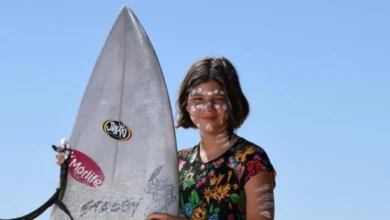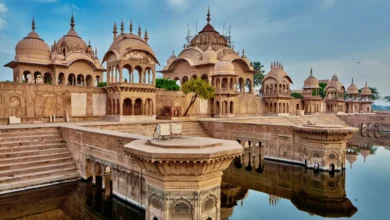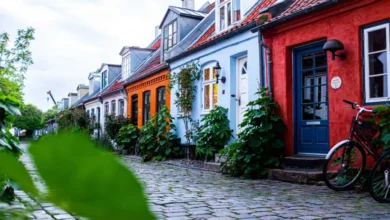St. Patrick’s Day, celebrated annually on March 17th, is a vibrant festival steeped in Irish culture and heritage. While the day is often associated with parades, green beer, and shamrocks, one of its most iconic elements is traditional Irish clothing.
From the intricate patterns of Aran sweaters to the timeless elegance of kilts, traditional Irish attire offers a fascinating glimpse into Ireland’s rich history and craftsmanship. In this article, we’ll explore the origins, significance, and modern interpretations of traditional clothing worn during St. Patrick’s Day celebrations.

The Roots of Irish Traditional Clothing
Traditional Irish clothing has evolved over centuries, influenced by the country’s geography, climate, and social customs. Historically, Irish garments were designed for practicality, providing warmth and protection against the island’s damp and chilly weather.
Wool, linen, and tweed were the primary materials used, as they were readily available and durable. Over time, these functional pieces became symbols of Irish identity, embodying the spirit of resilience and creativity that defines the nation.
See also The Women of the Himba Tribe: Guardians of Tradition in Namibia’s Arid Heartland
The Women of the Himba Tribe: Guardians of Tradition in Namibia’s Arid Heartland
Today, many people wear traditional or inspired-by-tradition outfits to honor their Irish roots and celebrate St. Patrick’s Day with authenticity. Let’s delve into some of the most iconic garments and accessories.

Aran Sweaters: Knitted Tales of Heritage
Perhaps the most iconic piece of traditional Irish clothing, the Aran sweater hails from the rugged Aran Islands off Ireland’s west coast. These hand-knitted wool sweaters are famous for their intricate cable patterns, each woven with symbolic meaning. For instance:
- Cables evoke fishermen’s ropes, embodying hope for a plentiful catch.
- Diamonds symbolize wealth and success, often mirroring Ireland’s lush, fertile fields.
- Honeycomb patterns are thought to usher in good luck and prosperity.
Historically, these sweaters were crafted by women in fishing villages for their husbands and sons. Made from thick, water-resistant wool, they not only shielded fishermen from the harsh Atlantic chill but also doubled as a poignant identifier—unique family stitching patterns helped recognize those lost at sea.
Today, Aran sweaters enjoy global popularity, cherished for their timeless beauty and deep ties to Irish heritage. On St. Patrick’s Day, they’re a festive staple, often paired with jeans or skirts for a look that’s both stylish and authentically Irish.people wearing these cozy sweaters paired with jeans or skirts, creating a stylish yet authentic look.
See also Dragons and Phoenixes: The Harmonious Dance of Symbolism in Chinese Silk Embroidery
Dragons and Phoenixes: The Harmonious Dance of Symbolism in Chinese Silk Embroidery

Kilt and Tartan: The Celtic Connection
While kilts are more commonly associated with Scotland, Ireland has its own version of this classic garment. Known as the féileadh mór (great wrap) or simply the Irish kilt, it was traditionally worn by Gaelic warriors and chieftains. Made from tartan fabric, which features distinctive crisscrossed patterns, the Irish kilt reflects regional pride through specific color combinations.
Each tartan design corresponds to a particular clan or county, much like Scottish tartans. For instance, the Munster tartan incorporates shades of green, blue, and gold, while the Ulster tartan uses red, black, and white. Wearing a kilt on St. Patrick’s Day is a bold way to showcase your Irish ancestry and pay homage to ancient traditions.
To complete the look, many people pair their kilts with accessories such as sporran pouches, leather belts, and brooches featuring Celtic knotwork—a motif that symbolizes eternity and interconnectedness.
Shawls and Capes: Elegance in Simplicity
Before the introduction of mass-produced textiles, shawls and capes were essential items in Irish wardrobes. Made from wool or linen, these versatile garments provided additional warmth and could be draped elegantly over dresses or tunics. Many shawls featured delicate embroidery or crocheted edges, showcasing the skill of Irish artisans.
On St. Patrick’s Day, shawls and capes can add a touch of vintage charm to any outfit. They are especially popular among those participating in cultural events or reenactments, where historical accuracy is valued. Pairing a shawl with a simple dress or blouse creates a look that is both modest and sophisticated.
Green: The Color of Ireland
No discussion of St. Patrick’s Day attire would be complete without mentioning the color green. Often referred to as “the Emerald Isle,” Ireland is synonymous with lush landscapes and verdant hues. Wearing green on St. Patrick’s Day is believed to bring good fortune and protect against mischievous leprechauns!
In traditional Irish clothing, green appears in various forms, from emerald-toned fabrics to subtle accents in embroidery. Modern interpretations range from full-on green suits and dresses to small touches like scarves, hats, or even shamrock pins. Whether you choose to go all-out or keep it understated, incorporating green into your outfit is a must for celebrating the occasion.

Accessories: Adding a Personal Touch
Accessories play a crucial role in completing a traditional Irish ensemble. Here are a few key pieces to consider:
- Celtic Jewelry: Rings, necklaces, and bracelets featuring intricate knotwork or Trinity knot designs are timeless choices.
- Shamrock Motifs: This three-leaf clover is an enduring symbol of Ireland and St. Patrick himself. Look for brooches, earrings, or lapel pins adorned with shamrocks.
- Flat Caps: Also known as “newsboy caps,” these woolen hats have long been a staple of Irish menswear. They lend a casual yet polished finish to any outfit.
For women, hair ribbons, headbands, or floral wreaths made from greenery can evoke a whimsical, festive vibe.

Modern Takes on Tradition
While traditional clothing remains beloved, many people today opt for updated versions that blend old-world charm with contemporary style. Designers have embraced Irish motifs, incorporating elements like Celtic knots, tartan prints, and natural fibers into modern fashion. For example, tailored blazers in tweed or dresses with embroidered details offer a chic nod to tradition without sacrificing comfort or versatility.
Retailers specializing in Irish imports make it easier than ever to find authentic pieces, whether online or in-store. Alternatively, DIY enthusiasts might try their hand at knitting an Aran sweater or sewing a simple kilt-style skirt.
Conclusion: Wear Your Heritage with Pride

Traditional Irish clothing is more than just fabric—it’s a celebration of history, artistry, and community. Whether you’re donning an Aran sweater, sporting a tartan kilt, or accessorizing with Celtic jewelry, your St. Patrick’s Day attire tells a story of connection to Ireland’s past and present.
This year, why not take inspiration from these timeless garments and incorporate them into your celebration? By doing so, you’ll not only honor Irish culture but also create memories that will last a lifetime. Sláinte! (Cheers!)




